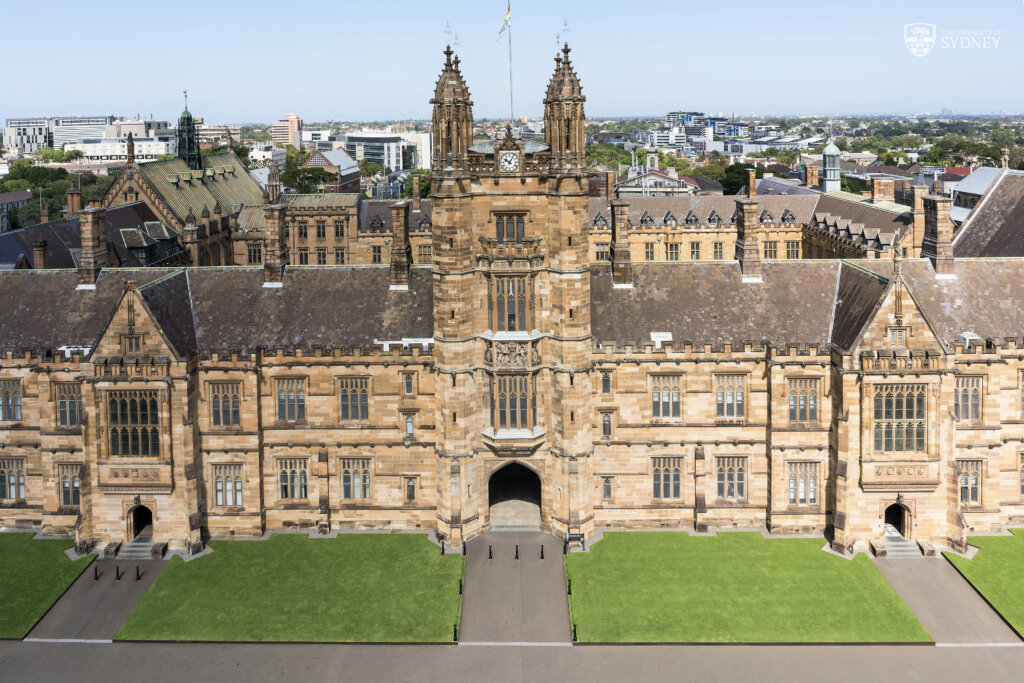Despite global efforts, women still comprise only one-third of the scientific community, with little progress made over the past decade. According to UNESCO’s 2024 report, Changing the Equation: Securing STEM Futures for Women, women hold just 22 percent of STEM jobs in G20 countries. In response, the US has ramped up initiatives to close this gap. In early 2024, the U.S. State Department and USAID relaunched the US-India Alliance for Women’s Economic Empowerment, expanding mentorship and STEM entrepreneurship through partnerships with organisations such as the George Washington University. As the US remains a global hub for STEM innovation, this blog guides women, especially international students, on how to leverage postgraduate degrees to unlock opportunities and build lasting careers.
Research opportunities for women in STEM
STEM programmes frequently offer students unique opportunities to utilise state-of-the-art research facilities and the latest technology. This advantage extends to international students pursuing STEM degrees, who can tap into assistantships, internships, and renowned research programmes. Here are some of the avenues to explore:
1) University research facilities
Leading US institutions have world-class research facilities in various STEM disciplines, offering international students access to advanced laboratories and opportunities to collaborate on groundbreaking research. For instance, international students at the Massachusetts Institute of Technology (MIT) have the privilege of working in state-of-the-art laboratories, such as the Media Lab or the MIT Computer Science and Artificial Intelligence Laboratory (CSAIL). Stanford University boasts top-notch laboratories and research centres like the Stanford Linear Accelerator Center (SLAC) and the Nanoscale Prototyping Laboratory. Facilities at Harvard University include renowned research centres like the Harvard-Smithsonian Center for Astrophysics and the Wyss Institute for Biologically Inspired Engineering.
2) National Laboratories
National laboratories serve as critical hubs for cutting-edge scientific research across various fields. These facilities are at the forefront of technological advancements and offer diverse opportunities for researchers, scientists, and engineers to explore and contribute to multiple scientific disciplines. For instance, the Lawrence Berkeley National Laboratory is renowned for its contributions to nuclear physics, materials science, and environmental research. Oak Ridge National Laboratory is a leader in various STEM disciplines, including nuclear science, materials research, and supercomputing. The lab houses the Oak Ridge Leadership Computing Facility, which provides supercomputing resources for scientific simulations and data analysis. Los Alamos National Laboratory has a rich history in nuclear research and national security. It is a key player in nuclear physics, nuclear engineering, and materials science, focusing on ensuring the safety and reliability of the nation’s nuclear stockpile.
3) NASA research centres
The US is fortunate to host several NASA research centres, which are instrumental in advancing our understanding of space exploration, aeronautics, and earth sciences. Among these, two prominent ones are the NASA Ames Research Center in California and the NASA Goddard Space Flight Center in Maryland. NASA Ames Research Center is a hub of innovation and scientific discovery, with a focus on astrobiology, aeronautics, and space technology. NASA Goddard Space Flight Center focuses on space and Earth science research.
4) Private research institutions
Private research institutions, exemplified by companies such as IBM, Google, and Tesla, play a pivotal role in the landscape of STEM (Science, Technology, Engineering, and Mathematics) education and innovation. These companies have dedicated research divisions that offer exceptional opportunities for STEM students to engage in groundbreaking projects, typically centred around emerging technologies and their real-world applications. Here’s a more detailed elaboration:
Scholarships and financial aid for Indian women in STEM
Scholarships and financial aid are integral for international female students pursuing STEM fields, as they not only help alleviate the financial burden of education but also promote diversity and gender equality in these traditionally male-dominated fields. Here are some notable options and avenues for women seeking to access financial support for their STEM education:
1) Fulbright Programme
The Fulbright Programme offers various scholarships and grants for international students, including those pursuing STEM degrees. These scholarships cover tuition, living expenses, and research costs. Applicants for study or research awards design their projects and typically work with advisers at foreign universities or other institutions of higher education. Programme requirements vary by country, so an applicant’s first step is to familiarise themselves with the programme summary for the host country.
2) Government scholarships
Another way STEM students can gain scholarships is by exploring opportunities within their respective governments. Besides the Fulbright Programme mentioned earlier, there are other scholarships such as the Agatha Harrison Memorial Fellowship, the National Overseas Scholarship (NOS) scheme for SC Candidates, the Inlaks Shivdasani Foundation Scholarship, the S.N. Bose Scholars Programme and the Narotam Sekhsaria Foundation.
3) Private organisations
Private organisations contribute significantly to funding STEM students. For example, the Tata Education and Development Trust established a $25 million endowment with Cornell University to support outstanding Indian undergraduate students, focusing on those majoring in biological, physical, and social sciences. The Aga Khan Foundation and the J N Tata Endowment also offer additional scholarships to students from India.
Fellowship opportunities for women in STEM
Various foundations, government agencies, and non-profit organisations provide research grants and fellowships for women in academia. These funding opportunities support research projects and often include living stipends and expenses for experiments. Some of them are:
1) The American Association of University Women (AAUW)
AAUW offers international fellowships for women pursuing graduate studies in the US. Women in STEM fields can access financial support through these fellowships, which cover tuition, living expenses, and research. The programme supports women pursuing full-time graduate or postdoctoral study in the US, who are not US citizens or permanent residents, and who intend to return to their home country to pursue a professional career. Both graduate and postgraduate studies at accredited US institutions are supported.
2) Generation Google Scholarship APAC
The Generation Google Scholarship for women in the Asia-Pacific region is a significant initiative aimed at empowering and supporting female students pursuing computer science degrees. This scholarship recognises the importance of diversity and gender equality in the tech industry by specifically targeting women in the Asia-Pacific region. It aims to encourage these students to pursue a career in computer science and become leaders in the field. The scholarship provides financial support by awarding $2,500 to selected students for the 2023-2024 academic year, thereby reducing financial barriers and acknowledging the academic excellence and potential of its recipients. Beyond financial assistance, it fosters a sense of leadership, community, and recognition in the tech industry. It aims to reshape the industry by empowering women to excel and contribute to the ever-evolving world of technology.
3) Schlumberger Foundation Faculty for the Future Programme
The Schlumberger Foundation is a nonprofit organisation that supports science and technology education. This programme serves as a catalyst for these women to further tap into their potential, awarding fellowships for advanced research in STEM at leading research institutes abroad. Faculty for the Future Fellows are expected to return to their home countries upon completion of their studies. They must also contribute to the public sector, where their newly acquired technical and scientific skills can help provide evidence-based support for STEM policy-making, including topics of gender representation.
4) P.E.O International Peace Scholarship
The International Peace Scholarship Fund was established in 1949 to provide scholarships for international women students to pursue graduate studies in the US or Canada. The scholarship is based upon demonstrated need; however, the award does not cover all academic or personal expenses. At the time of application, the applicant must indicate additional financial resources adequate to meet her estimated expenses.
Research grants for women in STEM
Research grants are fundamental to those pursuing STEM in the US. They offer the necessary financial support and resources for students to engage in groundbreaking research projects, which are critical for advancing knowledge in these fields. Let’s explore some of the opportunities specifically available for women in STEM.
1) Margaret McNamara Education Grants (MMEG)
MMEG is a nonprofit public charity that empowers exceptional women from developing countries through higher education. MMEG provides financial support, scholarships, and grants to women pursuing a wide range of fields of study, including engineering, information technology, health, science, education, social studies, and law. By investing in their education, MMEG identifies these women as catalysts for change, enabling them to address critical issues and make a positive impact on their communities and the lives of women and children in their home countries.
2) IndiaBioscience
In 2019, IndiaBioscience introduced the International Grants Awareness Program (iGAP), a notable initiative with dual purposes. Firstly, it aims to raise awareness among Indian researchers about the availability of international funding opportunities. Secondly, iGAP provides training and motivation for these researchers to pursue and apply for international grants actively. In essence, the programme not only bridges the information gap but also empowers Indian researchers to compete internationally for research funding, thereby enhancing their capabilities and expanding their potential.
3) Bill and Melinda Gates Foundation
In 2003, the Bill & Melinda Gates Foundation launched Grand Challenges in Global Health. This initiative initially focused on 14 significant scientific challenges. It awarded 44 grants totalling over $450 million for research projects and an additional supporting project addressing ethical, social, and cultural issues across the initiative. They consistently update their grant opportunities here.
Postgraduate STEM-OPT Opportunities
Women from countries with strong STEM education backgrounds have a significant advantage and can benefit from numerous policy changes related to immigration. After students graduate from their programmes, they usually participate in Optional Practical Training (OPT) to gain work experience. Students can apply to receive up to 12 months of OPT employment. Students in STEM fields have an added advantage where they can apply for a 24-month extension of their post-completion OPT. Here’s the complete list of STEM Designated Degree Programmes.
In conclusion, female STEM scholars in the US should strive to secure the numerous opportunities available to them, as they play a vital role in the advancement of science worldwide. Currently, opportunities for women in the sciences continue to grow, and women should strive to explore all available avenues to pursue their degrees with ease.
So, while women in STEM fields are underrepresented, opportunities for them are growing in the US. Watch our webinar on Women in STEM and read our blog, Scholarships for Master’s Abroad: What International Students Must Know. For any assistance with your master’s application, please get in touch. Our experts look forward to hearing from you.




